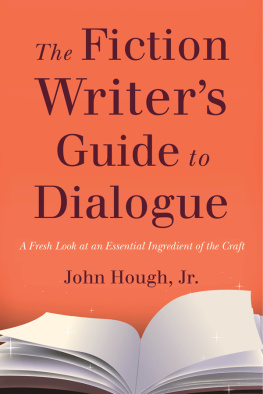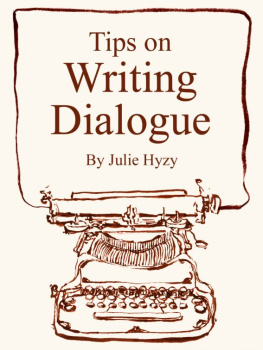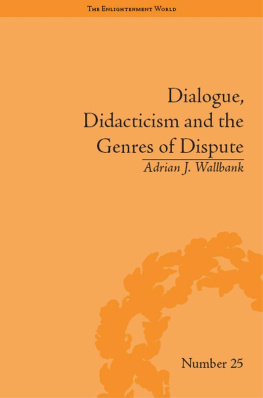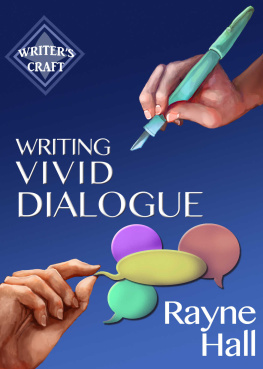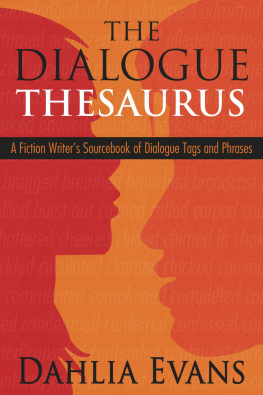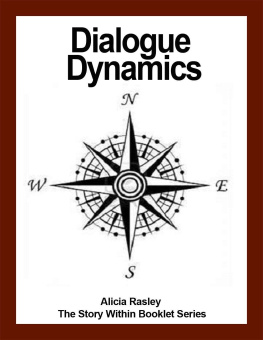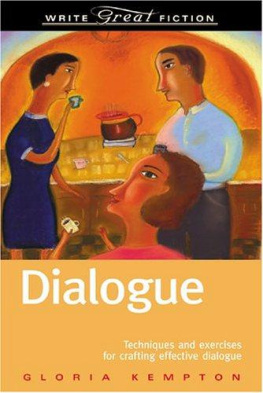Copyright 2015 by John Hough, Jr.
All rights reserved. Copyright under Berne Copyright Convention, Universal Copyright Convention, and Pan American Copyright Convention. No part of this book may be reproduced, stored in a retrieval system, or transmitted in any form, or by any means, electronic, mechanical, photocopying, recording or otherwise, without the express written consent of the publisher, except in the case of brief excerpts in critical reviews or articles. All inquiries should be addressed to Allworth Press, 307 West 36th Street, 11th Floor, New York, NY 10018.
Allworth Press books may be purchased in bulk at special discounts for sales promotion, corporate gifts, fund-raising, or educational purposes. Special editions can also be created to specifications. For details, contact the Special Sales Department, Allworth Press, 307 West 36th Street, 11th Floor, New York, NY 10018 or .
15 14 13 12 11 5 4 3 2 1
Published by Allworth Press, an imprint of Skyhorse Publishing, Inc.
307 West 36th Street, 11th Floor, New York, NY 10018.
Allworth Press is a registered trademark of Skyhorse Publishing, Inc., a Delaware corporation.
www.allworth.com
Cover design by Mary Belibasakis
Cover photo credit Thinkstock
Library of Congress Cataloging-in-Publication Data is available on file.
Print ISBN: 978-1-62153-439-6
Ebook ISBN: 978-1-62153-449-5
Printed in the United States of America
CONTENTS
INTRODUCTION:
Dialogue is Character
A friend of mine, an emeritus professor of American history at one of the countrys best liberal arts colleges, decided to write a novel in his retirement. It was a reasonable ambition; he was the author of four books and a lecturer of considerable eloquence and subtlety. He wrote a hundred pages, and an agent read them.
She declined to represent him. His characters, she said, lacked nuance and depth. They werent alive. He considered the criticism, looked again at his novel, and abandoned the idea of writing fiction.
Why?
I cant write dialogue, he said.
He was giving up too easily, but his appreciation of dialogue as essential to good fiction was on the money. A man or woman who does not write good dialogue is not a first-rate writer, declared the late George V. Higgins, and while it may not always have been truethe musty dialogue of Henry James comes to mindI cant think of a first-rate writer today who doesnt write good dialogue. Think of it as one of your most efficient tools, if not the mosta component that by itself can elevate your story or novel to literary excellence.
There is no great fiction without great characters, a truth going back to Odysseus and beyond. In the end, it is characters, far more than story, that make fiction great. Characters are the novelists lifetime gift to the reader. Think of Charles Dickens and you find yourself wandering a portrait gallery of old friends: Mr. Micawber, Lady Dedlock, the Artful Dodger, Ebenezer Scrooge, Betsey Trotwood, and on and on. Who remembers the plot of Treasure Island years after reading it, beyond a general idea of the voyage and mutiny? But Long John Silver, one of literatures most winsome villains, is as alive in our memory today as the day we put the book down. To read Huckleberry Finn at any age is to acquire a lifelong intimacy with Huck, Jim, Hucks drunken, snake-mean father, and the two cunning rapscallions who call themselves the Duke and the Dauphin. Story does count, of course, but our investment in a story, our capacity to care what happens, runs only as deep as our belief in the humanity of the characters.
Dialogue puts that humanity on vivid display. Characters are never more alive than when theyre speaking. To hear them is to see them up close: their physiognomy in fine detail, their expressions, the animation, or lack of it, in their eyes.
Whosoever of ye, says Captain Ahab, exhorting his crew on the deck of the Pequod, raises me a white-headed whale with a wrinkled brow and a crooked jaw; whosoever of ye raises me that white-headed whale, with three holes punctured in his starboard flukelook ye, whosoever raises me that same white whale, he shall have this gold ounce, my boys!
Ahabs obsession, his encroaching madness, ring out in that passionate utterance. We can hear his rising voice, we can see him: his avid face, the manic light in his eyes. Could a moment, or a character, be more vivid?
Action is character, wrote F. Scott Fitzgerald, meaning that characters in fiction define themselves most completely and reliably not by what they think and feel, but by what they do . Action is revelatory in a way that thought, opinion, emotionfelt but not expressedare not. Your character may have an aversion to the killing of animals, which tells us shes humane, moral, evolved. Important, sure, but what happens when she encounters a deer jacker gutting his kill in her woodlot? What does she say, what does she do? Now we find out who she really is.
A half century after Fitzgeralds dead-on pronouncement, George V. Higgins revised Fitzgeralds axiom: Dialogue is character. Higgins was really clarifying, not rewriting, Fitzgeralds dictum, because dialogue is action, as Fitzgerald surely understood. There are telling moments of sudden violent action in The Great Gatsby the death of Myrtle Wilson, Tom Buchanan breaking his mistresss nosebut the novels two great characters, Jay Gatsby and Daisy Buchanan, with her low, thrilling voice, reveal and define themselves throughout the novel with their pregnant and idiosyncratic dialogue. Nick Carraway has brought them together after their long separation, and Gatsby has led them from Nicks house to his and is showing them around. Daisy notices a photograph on the bureau:
I adore it, exclaimed Daisy. The pompadour! You never told me you had a pompadouror a yacht.
Look at this, said Gatsby quickly. Heres a lot of clippingsabout you.
They stood side by side examining it... The phone rang, and Gatsby took up the receiver.
Yes... Well, I cant talk now... I cant talk now, old sport... I said a small town... He must know what a small town is... Well, hes no use to us if Detroit is his idea of a small town...
He rang off.
Come here quick! cried Daisy at the window. The rain was still falling, but the darkness had parted in the west, and there was a pink and golden billow of foamy clouds above the sea.
Look at that, she whispered, and then after a moment: Id like to just get one of those pink clouds and put you in it and push you around.
Dialogue is character: Higgins proved his point brilliantly in his first and best novel, The Friends of Eddie Coyle. Nearly eighty percent of this rich and riveting crime novel is dialogue, and every characterbank robbers, a shady saloon keeper, a wily federal agent, and Eddie Coyle himself, family man and petty criminalis intensely alive. Meet Eddie Coyle, the stocky man, talking to a young gun dealer, in the opening scene of the novel:
The stocky man extended the fingers of his left hand over the gold-speckled Formica tabletop. You know what that is?
Your hand, Jackie Brown said.
I hope you look closer at guns n you look at that hand, the stocky man said. Look at your own goddamned hand.
Jackie Brown extended the fingers of his left hand. Yeah, he said.
Count your fucking knuckles, the stocky man said.
All of them? Jackie Brown said.
Ah Christ, the stocky man said. Count as many of them as you want. I got four more. One on each finger. Know how I got those? I bought some stuff from a man that I had his name, and it got traced, and the man I bought it for, he went to M C I Walpole for fifteen to twenty-five. Still in there, but he had some friends. I got an extra set of knuckles. Shut my hand in a drawer. Then one of them stomped the drawer shut.

